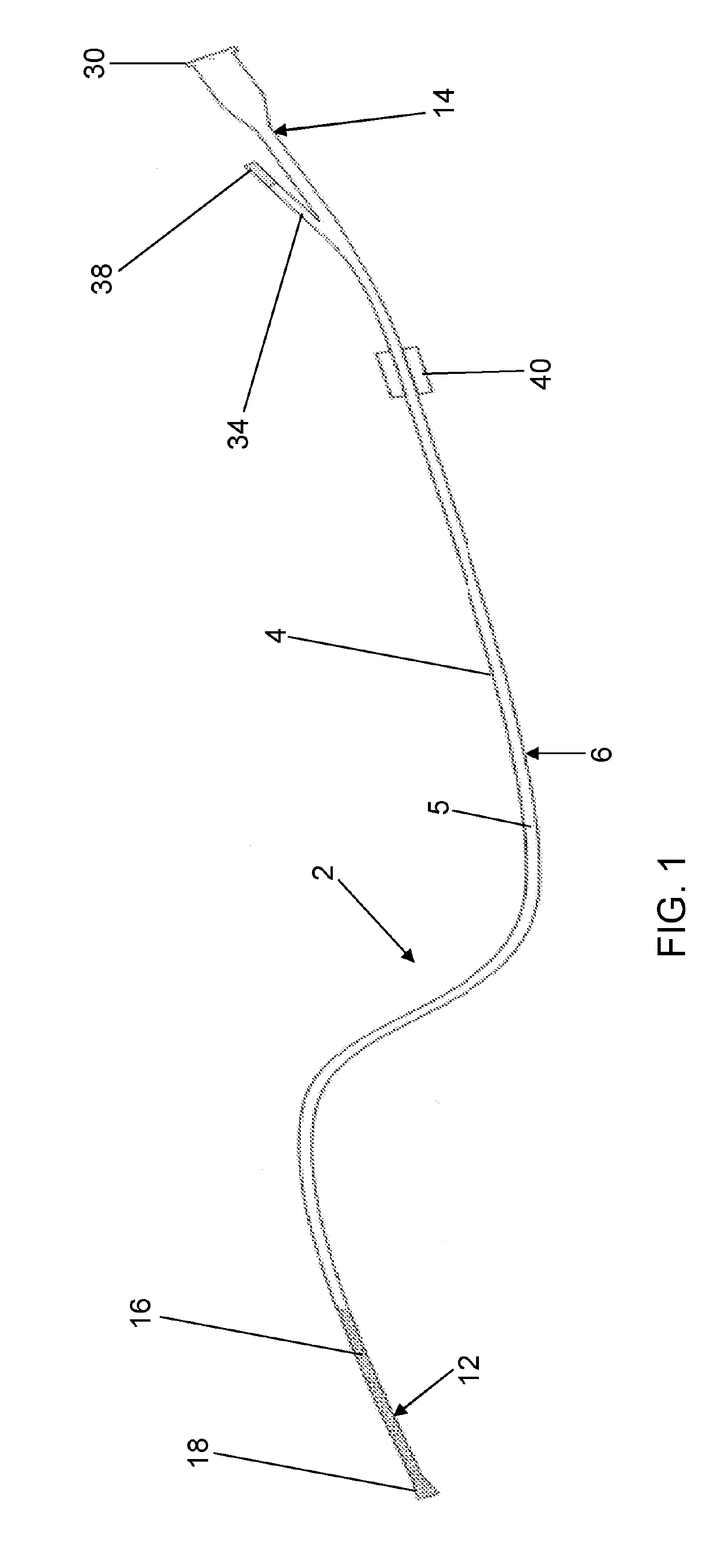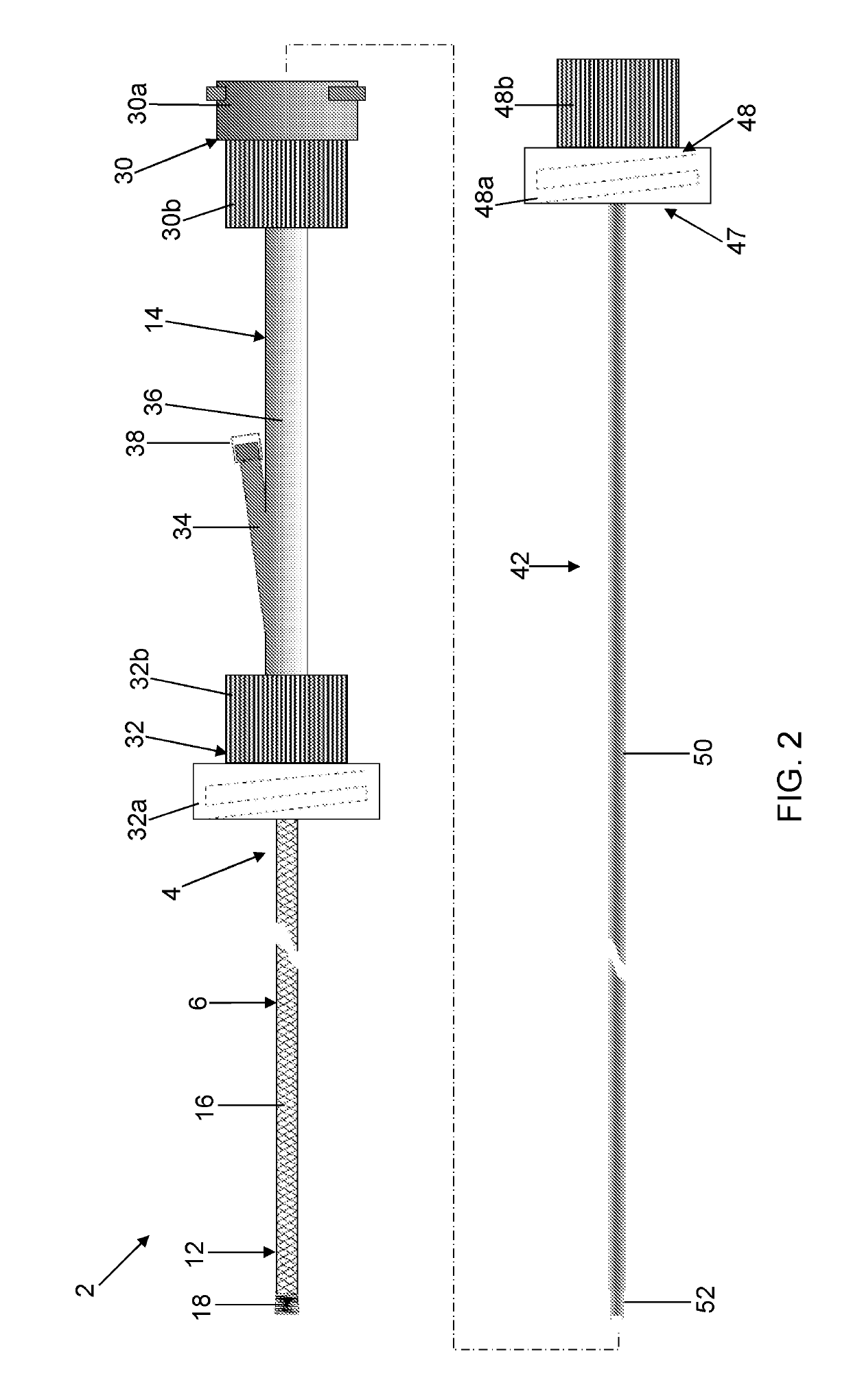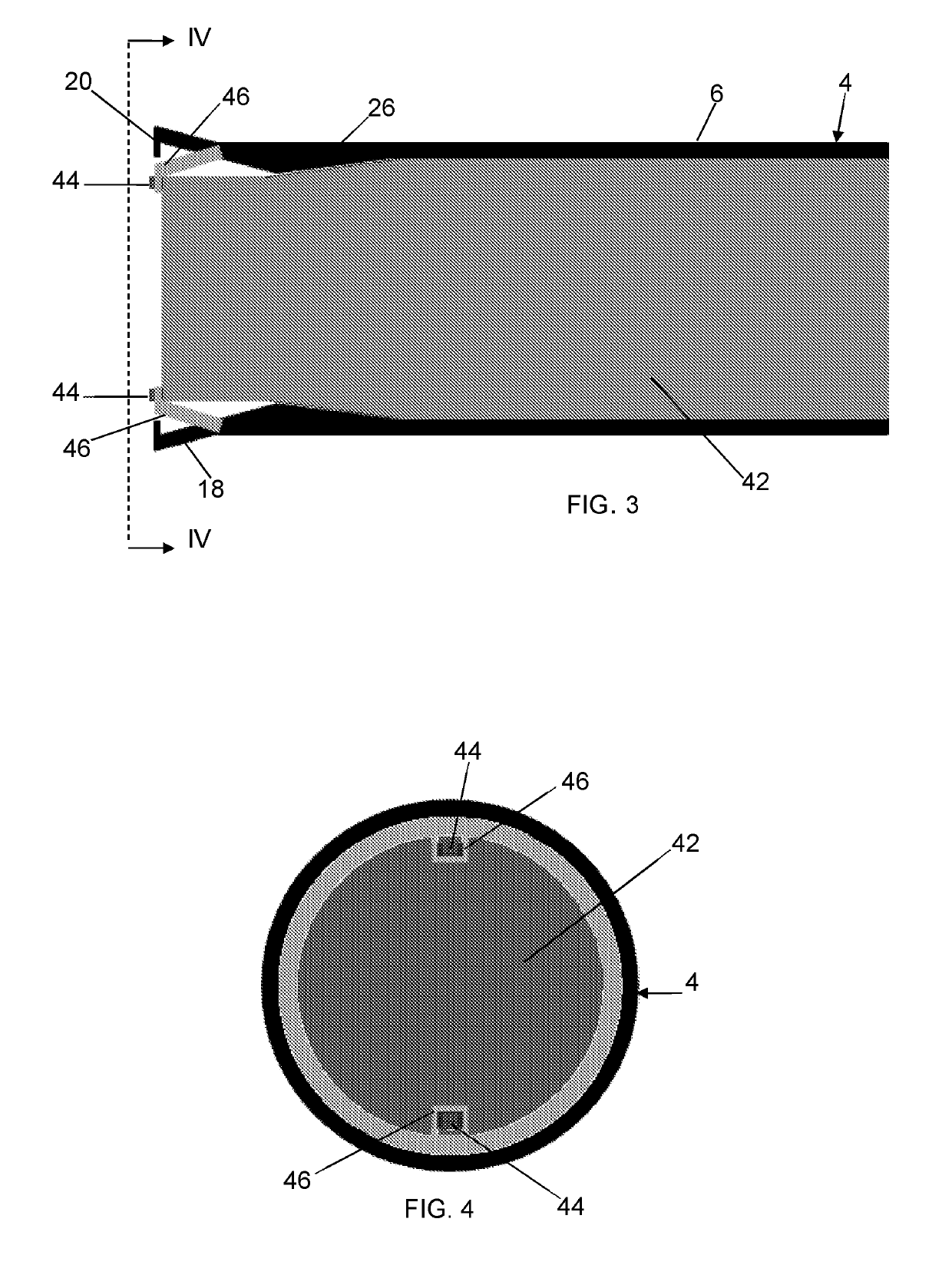Mini-Invasive Device for the Endourologic Treatment
a technology of endouroscope and endoscope, which is applied in the field of mini-invasive devices for endouroscope treatments, can solve the problems of reducing the flexibility of the latter, ineffectiveness in most cases, and stiffening of the latter, and achieves the effects of reducing surgery time, reliability and safety, and high accuracy
- Summary
- Abstract
- Description
- Claims
- Application Information
AI Technical Summary
Benefits of technology
Problems solved by technology
Method used
Image
Examples
Embodiment Construction
[0038]As can be seen in the figures, the mini-invasive device 2 according to the invention comprises a tubular conduit 4 having:
[0039]a central portion 6 intended to cross the entire operating channel 8 of an endoscope 10,
[0040]a portion 12 which in operation is distal and is intended to project from the inner end of endoscope 10, inserted in the patient's body, in order to reach the target to be treated,
[0041]a portion 14 which in operation is the proximal one and is intended to project from the outer end of endoscope 10 and to be connected to suction means, not shown.
[0042]The tubular conduit 4 internally delimits a suction conduit 5 and, within the latter, one or more tools used in the endourologic treatment and can be removably inserted, preferably a laser source 33 for lithotripsy, a gripping tool and / or a catheter 41 for injecting substances. Suitably, the suction conduit 5, defined by the tubular conduit 4, is configured so that multiple tools used in the endourologic treatme...
PUM
 Login to View More
Login to View More Abstract
Description
Claims
Application Information
 Login to View More
Login to View More - R&D
- Intellectual Property
- Life Sciences
- Materials
- Tech Scout
- Unparalleled Data Quality
- Higher Quality Content
- 60% Fewer Hallucinations
Browse by: Latest US Patents, China's latest patents, Technical Efficacy Thesaurus, Application Domain, Technology Topic, Popular Technical Reports.
© 2025 PatSnap. All rights reserved.Legal|Privacy policy|Modern Slavery Act Transparency Statement|Sitemap|About US| Contact US: help@patsnap.com



